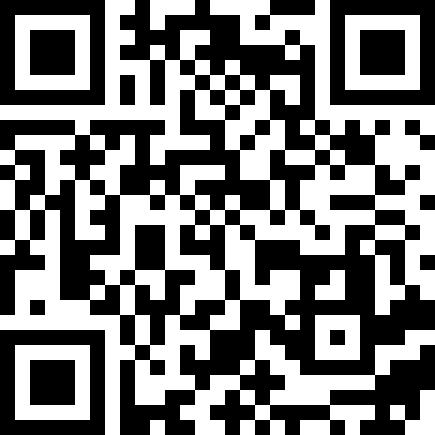Manifestaciones neurológicas en pacientes con diagnóstico de COVID-19
Resumen
Introducción: La aparición de una nueva variante de coronavirus ha desatado en una pandemia relacionada con un síndrome de distrés respiratorio severo por SARS-CoV-2. Las primeras manifestaciones asociadas a este nuevo síndrome eran netamente respiratorias. Sin embargo, con los diferentes estudios se evidenció no solo afectación pulmonar, si no sistémica especialmente a nivel neurológico en donde los pacientes presentan síntomas centrales y periféricos de afectación por coronavirus.
Materiales y Métodos: Se realizó una revisión utilizando base de datos como: PubMed, Scopus, Embase, Cochrane Library, Scielo, incluyendo estudios de tipo observacionales, artículos de revisión, guías clínicas, que evaluaran la presencia de manifestaciones neurológicas en pacientes con diagnóstico de del 2019 al 2021.
Resultados: Se incluyeron 26 artículos donde se observó que las manifestaciones neurológicas inespecíficas tal como la cefalea fue la más común con una presentación de 30%. Las manifestaciones neurológicas específicas se presentan con una frecuencia alrededor de 3% pero con mayor gravedad, incluyendo convulsiones e ictus.
Conclusiones: es una patología donde su principal característica es la sintomatología pulmonar. Sin embargo, algunos pacientes presentan manifestaciones neurológicas específicas las cuales son menos frecuentes, pero tienen un carácter más grave y en contraste las manifestaciones neurológicas inespecíficas que son más frecuentes pero no ponen en riesgo la vida del paciente. Tal sintomatología es crucial al momento de abordar a un paciente con COVID-19 y se debe tener presente las mismas en la atención médica oportuna.
Citas
2. Ferrarese C, Silani V, Priori A, Galimberti S, Agostoni E, Monaco S, et al. An Italian multicenter retrospective-prospective observational study on neurological manifestations of COVID-19 (NEUROCOVID). Neurol Sci. 2020; 41(6):1355–9. doi: 10.1007/s10072-020-04450-1
3. Lvov DK, Alkhovsky SV. [Source of the COVID-19 pandemic: ecology and genetics of coronaviruses (Betacoronavirus: Coronaviridae) SARS-CoV, SARS-CoV-2 (subgenus Sarbecovirus), and MERS-CoV (subgenus Merbecovirus)]. Vopr Virusol. 2020;65(2):62-70. doi: 10.36233/0507-4088-2020-65-2-62-70
4. Asrani P, Hassan MI. SARS-CoV-2 mediated lung inflammatory responses in host: targeting the cytokine storm for therapeutic interventions. Mol Cell Biochem. 2021;476(2):675-87. doi: 10.1007/s11010-020-03935-z
5. Escalada Pellitero S, Garriga Ferrer-Bergua L. Report of a patient with neurological symptoms as the sole manifestation of SARS-CoV-2 infection. Neurologia (Engl Ed). 2020 May;35(4):271–2. doi: 10.1016/j.nrl.2020.04.010
6. Borroni B, Gazzina S, Dono F, Mazzoleni V, Liberini P, Carrarini C, et al. Diaphragmatic myoclonus due to SARS-CoV-2 infection. Neurol Sci. 2020 ; 41(12):3471-4. doi: 10.1007/s10072-020-04766-y
7. Monti G, Giovannini G, Marudi A, Bedin R, Melegari A, Simone AM, et al. Anti-NMDA receptor encephalitis presenting as new onset refractory status epilepticus in COVID-19. Seizure. 2020; 81:18–20. doi: 10.1016/j.seizure.2020.07.006
8. Matschke J, Lütgehetmann M, Hagel Ch, Sperhake JP, Schröder AS, Edler C, et al. Neuropathology of patients with COVID-19 in Germany: a post-mortem case series. Lancet Neurol. 2020; 19(11):919–29. doi: 10.1016/S1474-4422(20)30308-2
9. Solomon IH, Normandin E, Bhattacharyya S, Mukerji SS, Keller K, Ali AS, et al. Neuropathological features of Covid-19. N Engl J Med. 2020; 383(10):989–92. doi: 10.1056/NEJMc2019373
10. Lee MH, Perl DP, Nair G, Li W, Maric D, Murray H, et al. Microvascular injury in the brains of patients with Covid-19. N Engl J Med. 2021; 384(5):481–3. doi: 10.1056/NEJMc2033369
11. Asrani P, Hasan GM, Sohal SS, Hassan MI. Molecular basis of pathogenesis of coronaviruses: A comparative genomics approach to planetary health to prevent zoonotic outbreaks in the 21st century. OMICS. 2020; 24(11):634–44. doi: 10.1089/omi.2020.0131
12. Delcuve GP, Lakowski TM, Su RCh, Beacon TH, Davie JR. SARS-CoV-2 multifaceted interaction with human host. Part I: What we have learnt and done so far, and the still unknown realities. IUBMB Life. 2020; 72(11):2313-30. doi: 10.1002/iub.2380
13. Song E, Zhang C, Israelow B, Lu-Culligan A, Prado AV, Skriabine S, et al. Neuroinvasion of SARS-CoV-2 in human and mouse brain. J Exp Med [Internet]. 2021 [cited 2022 Feb 10]; 218(3) :e20202135. Available from: https://pubmed.ncbi.nlm.nih.gov/33433624. doi: 10.1084/jem.20202135
14. Bauer L, Laksono BM, Vrij FMS de, Kushner SA, Harschnitz O, Riel D van. The neuroinvasiveness, neurotropism, and neurovirulence of SARS-CoV-2. Trends Neurosci. 2022; 45(5):358–68. doi: 10.1016/j.tins.2022.02.006
15. Harapan BN, Yoo HJ. Neurological symptoms, manifestations, and complications associated with severe acute respiratory syndrome coronavirus 2 (SARS-CoV-2) and coronavirus disease 19 (COVID-19). J Neurol. 2021; 268(9):3059–71. doi: 10.1007/s00415-021-10406-y
16. Uddin MB, Liang Y, Shao S, Palani S, McKelvey M, Weaver SC, Sun K. Type I IFN Signaling Protects Mice from Lethal SARS-CoV-2 Neuroinvasion. Immunohorizons. 2022 Oct 11;6(10):716-721. doi: 10.4049/immunohorizons.2200065.
17. Zubair AS, McAlpine LS, Gardin T, Farhadian S, Kuruvilla DE, Spudich S. Neuropathogenesis and neurologic manifestations of the coronaviruses in the age of coronavirus disease 2019: A review. JAMA Neurol. 2020; 77(8):1018-27. doi: 10.1001/jamaneurol.2020.2065
18. Jafari Khaljiri H, Jamalkhah M, Amini Harandi A, Pakdaman H, Moradi M, Mowla A. Comprehensive Review on Neuro-COVID-19 Pathophysiology and Clinical Consequences. Neurotox Res. 2021; 39(5):1613-29. doi: 10.1007/s12640-021-00389-z
19. Perrin P, Collongues N, Baloglu S, Bedo D, Bassand X, Lavaux T, et al. Cytokine release syndrome-associated encephalopathy in patients with COVID-19. Eur J Neurol. 2021;28(1):248–58. doi: 10.1111/ene.14491
20. Garg RK. Spectrum of neurological manifestations in Covid-19: A review. Neurol India. 2020; 68(3):560-72. doi: 10.4103/0028-3886.289000
21. Berger JR. COVID-19 and the nervous system. J Neurovirol. 2020; 26(2):143-8. doi: 10.1007/s13365-020-00840-5
22. Ahmed MU, Hanif M, Ali MJ, Haider MA, Kherani D, Memon GM, Karim AH, Sattar A. Neurological Manifestations of COVID-19 (SARS-CoV-2): A Review. Front Neurol. 2020; 11:518. doi: 10.3389/fneur.2020.00518
23. Mao L, Jin H, Wang M, Hu Y, Chen S, He Q, et al. Neurologic manifestations of hospitalized patients with coronavirus disease 2019 in Wuhan, China. JAMA Neurol. 2020; 77(6):683–90. doi: 10.1001/jamaneurol.2020.1127
24. Chen Ch, Haupert SR, Zimmermann L, Shi X, Fritsche LG, Mukherjee B. Global Prevalence of Post-Coronavirus Disease 2019 (COVID-19) Condition or Long COVID: A Meta-Analysis and Systematic Review. J Infect Dis. 2022; 226(9):1593-1607. doi: 10.1093/infdis/jiac136
25. Fernández-de-Las-Peñas C, Gómez-Mayordomo V, Cuadrado ML, Palacios-Ceña D, Florencio LL, Guerrero AL, et al. The presence of headache at onset in SARS-CoV-2 infection is associated with long-term post-COVID headache and fatigue: A case-control study. Cephalalgia. 2021; 41(13):1332-41. doi: 10.1177/03331024211020404
26. Aldè M, Barozzi S, Di Berardino F, Zuccotti G, Consonni D, Ambrosetti U, et al. Prevalence of symptoms in 1512 COVID-19 patients: have dizziness and vertigo been underestimated thus far? Intern Emerg Med. 2022; 17(5):1343–53. doi: 10.1007/s11739-022-02930-0
27. Guan WJ, Ni ZY, Hu Y, Liang WH, Ou CQ, He JX, et al. Clinical characteristics of coronavirus disease 2019 in China. N Engl J Med [Internet]. 2020 [cited 2022 Oct 25]; Available from: https://pubmed.ncbi.nlm.nih.gov/32109013. doi: 10.1056/NEJMoa2002032
28. Swarz JA, Daily S, Niemi E, Hilbert SG, Ibrahim HA, Gaitanis JN. COVID-19 infection presenting as acute-onset focal status epilepticus. Pediatr Neurol. 2020; 112:7. doi: 10.1016/j.pediatrneurol.2020.07.012
29. Waters BL, Michalak AJ, Brigham D, Thakur KT, Boehme A, Claassen J, Bell M. Incidence of electrographic seizures in patients with COVID-19. Front Neurol [Internet]. 2021 [cited 2022 Oct 26]; 12:614719. Available from: https://pubmed.ncbi.nlm.nih.gov/33613431. doi: 10.3389/fneur.2021.614719
30. Muccioli L, Zenesini C, Taruffi L, Licchetta L, Mostacci B, Di Vito L, et al. Risk of hospitalization and death for COVID-19 in persons with epilepsy over a 20-month period: The EpiLink Bologna cohort, Italy. Epilepsia. 2022;63(9):2279–89. doi: 10.1111/epi.17356
31. Baral R, Ali O, Brett I, Reinhold J, Vassiliou VS. COVID-19: a pan-organ pandemic. Oxf Med Case Reports. 2020; 2020(12): omaa107. doi: 10.1093/omcr/omaa107
32. Paterson RW, Brown RL, Benjamin L, Nortley R, Wiethoff S, Bharucha T, et al. The emerging spectrum of COVID-19 neurology: clinical, radiological and laboratory findings. Brain. 2020; 143(10):3104–20. doi: 10.1093/brain/awaa240
33. Currò CT, Ciacciarelli A, Vitale Ch, Vinci ES, Toscano A, Vita G, Trimarchi G, Silvestri R, Autunno M. Chronic migraine in the first COVID-19 lockdown: the impact of sleep, remote working, and other life/psychological changes. Neurol Sci. 2021; 42(11):4403-18. doi: 10.1007/s10072-021-05521-7
34. Angus-Leppan H, Guiloff AE, Benson K, Guiloff RJ. Navigating migraine care through the COVID-19 pandemic: an update. J Neurol. 2021; 268(11):4388–95. doi: 10.1007/s00415-021-10610-w
35. Fabbri VP, Riefolo M, Lazzarotto T, Gabrielli L, Cenacchi G, Gallo C, et al. COVID-19 and the brain: The neuropathological Italian experience on 33 adult autopsies. Biomolecules. 2022; 12(5):629. doi: 10.3390/biom12050629
36. Vaira LA, Salzano G, Deiana G, De Riu G. Anosmia and ageusia: Common findings in COVID-19 patients. Laryngoscope. 2020; 130(7):1787. doi: 10.1002/lary.28692
37. Chang YP, Yang ChJ, Chen YH. In reference to anosmia and ageusia: Common findings in COVID-19 patients. Laryngoscope. 2020; 130(11): E694. doi: https://doi.org/10.1002/lary.28754
38. Brann DH, Tsukahara T, Weinreb C, Lipovsek M, Van den Berge K, Gong B, et al. Non-neuronal expression of SARS-CoV-2 entry genes in the olfactory system suggests mechanisms underlying COVID-19-associated anosmia. Sci Adv. 2020; 6(31): eabc5801. doi: 10.1126/sciadv.abc5801
39. Zheng J, Wong LYR, Li K, Verma AK, Ortiz ME, Wohlford-Lenane Ch, et al. COVID-19 treatments and pathogenesis including anosmia in K18-hACE2 mice. Nature. 2021;589(7843):603–7. doi: 10.1038/s41586-020-2943-z
40. Hosseini AA, Shetty AK, Sprigg N, Auer DP, Constantinescu CS. Delirium as a presenting feature in COVID-19: Neuroinvasive infection or autoimmune encephalopathy?. Brain Behav Immun. 2020; 88:68-70. doi: 10.1016/j.bbi.2020.06.012
41. Syahrul S, Maliga HA, Ilmawan M, Fahriani M, Mamada SS, Fajar JK, et al. Hemorrhagic and ischemic stroke in patients with coronavirus disease 2019: incidence, risk factors, and pathogenesis - a systematic review and meta-analysis. F1000Res. 2021; 10:34. doi: 10.12688/f1000research.42308.1
42. Amraei R, Rahimi N. COVID-19, renin-angiotensin system and endothelial dysfunction. Cells [Internet]. 2020 [cited 2022 Oct 28]; 9(7):1652. Available from: https://pubmed.ncbi.nlm.nih.gov/32660065. doi: 10.3390/cells9071652
43. Alonso R, Silva B, Garcea O, Correa Diaz PE, Dos Passos GR, Ramirez Navarro DA, et al. COVID-19 in multiple sclerosis and neuromyelitis optica spectrum disorder patients in Latin America: COVID-19 in MS and NMOSD patients in LATAM. Mult Scler Relat Disord. 2021; 51:102886. doi: 10.1016/j.msard.2021.102886
44. Ghajarzadeh M, Bonavita S. Are patients with multiple sclerosis (MS) at higher risk of COVID-19 infection?. Neurol Sci. 2020; 41(9):2315-6. doi: 10.1007/s10072-020-04570-8
45. Ciotti JR, Grebenciucova E, Moss BP, Newsome SD. Multiple sclerosis disease-modifying therapies in the COVID-19 era. Ann Neurol. 2020; 88(6):1062-4. doi: 10.1002/ana.25907
46. Niazkar HR, Zibaee B, Nasimi A, Bahri N. The neurological manifestations of COVID-19: a review article. Neurol Sci. 2020; 41(7):1667-71. doi: 10.1007/s10072-020-04486-3
47. Khan F, Sharma P, Pandey S, Sharma D, V V, Kumar N, Shukla S, et al. COVID-19-associated Guillain-Barre syndrome: Postinfectious alone or neuroinvasive too?. J Med Virol. 2021; 93(10):6045-9. doi: 10.1002/jmv.27159
48. Mota Araújo N, Campos Ferreira L, Paraíso Dantas D, Santos Silva D, Alves Dos Santos C, Cipolotti R, Martins-Filho PR. First report of SARS-CoV-2 detection in cerebrospinal fluid in a child with Guillain-Barré syndrome. Pediatr Infect Dis J. 2021; 40(7):e274–6. doi: 10.1097/INF.0000000000003146
49. Akçay N, Menentoğlu ME, Bektaş G, Şevketoğlu E. Axonal Guillain‐Barre syndrome associated with SARS‐CoV‐2 infection in a child. J Med Virol. 2021; 93(9):5599–602. doi: 10.1002/jmv.27018
50. Pelea T, Reuter U, Schmidt Ch, Laubinger R, Siegmund R, Walther BW. SARS-CoV-2 associated Guillain–Barré syndrome. J Neurol. 2021;268(4):1191–4. 10.1007/s00415-020-10133-w
51. Abu-Rumeileh S, Abdelhak A, Foschi M, Tumani H, Otto M. Guillain–Barré syndrome spectrum associated with COVID-19: an up-to-date systematic review of 73 cases. J Neurol. 2021;268(4):1133–70. doi: 10.1007/s00415-020-10124-x
52. Agosti E, Giorgianni A, D’Amore F, Vinacci G, Balbi S, Locatelli D. Is Guillain-Barrè syndrome triggered by SARS-CoV-2? Case report and literature review. Neurol Sci. 2021;42(2):607–12. doi: 10.1007/s10072-020-04553-9
53. Serrano-Serrano B, López-Hernández N, Dahl-Cruz F, Elvira-Soler E, Díaz-Marín C. [Multifocal encephalitis as a neurological manifestation of COVID-19 infection]. Rev Neurol. 2020; 71(9):351–2. doi: 10.33588/rn.7109.2020226
54. Munz M, Wessendorf S, Koretsis G, Tewald F, Baegi R, Krämer S, et al. Acute transverse myelitis after COVID-19 pneumonia. J Neurol. 2020; 267(8):2196–7. doi: 10.1007/s00415-020-09934-w
55. Huang Ch, Huang L, Wang Y, Li X, Ren L, Gu X, et al. 6-month consequences of COVID-19 in patients discharged from hospital: a cohort study. Lancet. 2021; 397(10270):220–32. doi: 10.1016/S0140-6736(20)32656-8
56. Jin M, Tong Q. Rhabdomyolysis as potential late complication associated with COVID-19. Emerg Infect Dis. 2020;26(7):1618–20. doi: 10.3201/eid2607.200445
57. Jain S, Potschka H, Chandra PP, Tripathi M, Vohora D. Management of COVID-19 in patients with seizures: Mechanisms of action of potential COVID-19 drug treatments and consideration for potential drug-drug interactions with anti-seizure medications. Epilepsy Res. 2021; 174: 106675. doi: 10.1016/j.eplepsyres.2021.106675
58. Pellinen J, Holmes MG. Evaluation and Treatment of Seizures and Epilepsy During the COVID-19 Pandemic. Curr Neurol Neurosci Rep. 2022; 22(1):11–7. doi: 10.1007/s11910-022-01174-x
59. Polack FP, Thomas SJ, Kitchin N, Absalon J, Gurtman A, Lockhart S, et al. Safety and efficacy of the BNT162b2 mRNA Covid-19 vaccine. N Engl J Med. 2020; 383(27):2603–15. doi: 10.1056/NEJMoa2034577
60. Aghagoli G, Gallo Marin B, Katchur NJ, Chaves-Sell F, Asaad WF, Murphy SA. Neurological involvement in COVID-19 and potential mechanisms: A review. Neurocrit Care. 2021; 34(3):1062-71. doi: 10.1007/s12028-020-01049-4
61. Nabizadeh F, Balabandian M, Sodeifian F, Rezaei N, Rostami MR, Naser Moghadasi A. Autoimmune encephalitis associated with COVID-19: A systematic review. Mult Scler Relat Disord. 2022; 62: 103795. doi: 10.1016/j.msard.2022.103795
62. Valencia Sanchez C, Theel E, Binnicker M, Toledano M, McKeon A. Autoimmune encephalitis after SARS-CoV-2 infection: Case frequency, findings, and outcomes. Neurology. 2021; 97(23): e2262-e8. doi: 10.1212/WNL.0000000000012931
63. Caress JB, Castoro RJ, Simmons Z, Scelsa SN, Lewis RA, Ahlawat A, Narayanaswami P. COVID-19-associated Guillain-Barré syndrome: The early pandemic experience. Muscle Nerve. 2020; 62(4):485-91. doi: 10.1002/mus.27024
64. Hasan I, Saif-Ur-Rahman KM, Hayat S, Papri N, Jahan I, Azam R, et al. Guillain-Barré syndrome associated with SARS-CoV-2 infection: A systematic review and individual participant data meta-analysis. J Peripher Nerv Syst. 2020;25(4):335–43. doi: 10.1111/jns.12419
65. Pratama IS, Oktaviono YH, Lusida TTE. Posterior myocardial infarction in a 45-year-old javanese woman with a 1-month history of COVID-19-related Guillain-Barré syndrome: A challenging emergency diagnosis. Am J Case Rep. 2022; 23: e937105. doi: 10.12659/AJCR.937105
66. Korem S, Gandhi H, Dayag DB. Guillain-Barré syndrome associated with COVID-19 disease. BMJ Case Rep. 2020;13(9): e237215. doi: 10.1136/bcr-2020-237215
67. Duong-Quy S, Huynh-Truong-Anh D, Nguyen-Thi-Kim T, Nguyen-Quang T, Nguyen-Chi T, Tran-Xuan Q, et al. Guillain-Barré syndrome in patient with SARS-CoV-2 PCR positivity treated successfully with therapeutic exchange plasma: A first case report from Vietnam. Front Neurol. 2022; 13:868667. doi: 10.3389/fneur.2022.868667

















